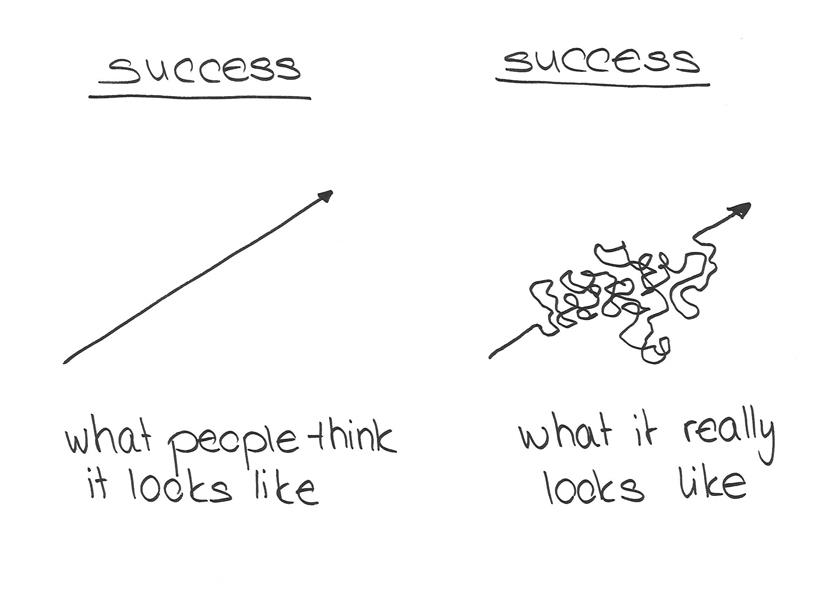
Watching your business grow is one of the most exciting things you can ever experience.
It’s like watching one of your children grow up.
Here are 8 common growing pains that most fast-growing companies go through, along with some tips for what you can do to make them as easy as possible.

It’s hard to describe the feelings of realizing that you’re helping customers be better people, helping your employees put a roof over their head, and succeeding in your dream.
But it’s not easy.
Every business has its ups and downs, its problems, and culture issues.

Success isn’t as easy most people think.
There are no quick wins in business – it takes years to become an overnight success.Richard Branson
While everyone loves a good success story, it’s rare that we hear about all of the pain, struggle, and hard work that it took to get there.
Hiring The Right People
As your company grows, you’ll need to hire the right people to sustain that growth.
That’s obviously easier said than done.
When you’re growing quickly, you’ll want to hire quickly, and that can lead to some big mistakes. It’s important that you hire someone who will fit in with your culture, get along with the team, and end up staying there for a while.
According to the RainMaker Group, a consulting firm, hiring problems account for 80% of employee turnover.
Employees will sometimes voluntarily leave if they feel like it’s not what they had expected, and sometimes they’ll be fired for not being able to keep up with the growth.
As a basic first step, you need to have good job descriptions, so that candidates know what to expect, and a great interviewing process, to make sure you’re hiring the best person.
Idea to fix this: This is easier said than done, but you need to be strict about taking your time to hire the right person. It’s short term pain for long term gain.
It will be much more expensive, in time, energy, and money, if you hire the wrong person.
Your people are your most important asset and as you grow, who you have to help fuel that growth is the key. Don’t make the mistake of hiring too quickly.
Managing Employee Benefits
As your company grows, you’ll want to make sure to keep your employees happy by offering them benefits, PTO, insurance, and other important perks.
This can be tough to manage though, because you might not have the knowledge or time to research the best providers and pick the best options.
Once you do figure out how to manage all of this, most people use Excel or Google Docs to handle the administration of all of this, but this quickly becomes unsustainable.
Plus, you need to stay relevant against the competition. It’s likely that most, if not all of your competitors will be offering benefits, nice perks, flexible schedules, etc.
To stay ahead of the competition, you need to offer equal, if not better benefits.
But this can be a lot to handle.
It’s not that easy to manage and maintain all of your HR administration, and when you’re growing, you might not have the funds to outsource that effort.
Idea to fix this: Use Zenefits. Zenefits is the easiest way to handle the administration of all of your HR needs. While it’s only available in the US, it’s an amazing tool that will save you a ton of time.
Employees are able to manage their own profiles, you can stay compliant with the laws, and it’s completely free.
For small businesses, it’s a great solution, because it takes away a lot of the time required to handle all of this.
Keeping A Pulse On Your Employees
When you’re 10 or 20 employees, keeping a pulse on the culture and maintaining that family type of bond with your team is relatively easy.
As you start to grow though, that becomes harder and harder. Once you get past a certain number of employees (I’ve heard 50 is the magic number), your culture starts to slip.
You don’t know your employees the same way you did when it was only a few of you.
You need a simple way to know what employees want, how they feel, and if anything is bothering them. Without that knowledge, you can have employees that are disengaged.
When you have an employee that is disengaged for long, they risk quitting, leaving you the headache of replacing them and fixing the culture on your team.
Imagine if you were able to know about those issues before they become serious problems.
You’d be able to address them quickly and improve things for them and future employees.
Idea to fix this: *Shameless Plug* Use Officevibe. Offiecvibe helps you collect anonymous feedback in real-time, giving a voice to your employees for them to express any concerns they have.
Through anonymous surveys, Officevibe measures 10 metrics of employee engagement, to give you a complete picture of where each of your teams stand.
It’s made for busy managers, and everything was designed for the simplest administration possible. No complex reports, all the survey and data collection is automated, and it even offers tips to improve based on the data it sees.
Communication Struggles
As your team grows, communication becomes harder, but also becomes more important.
It becomes harder because it’s easy to forget to update everyone or assume that not everyone needs to be kept in the loop, but remember, knowledge is power. You want your team to have the most knowledge possible and make sure all teams are on the same page working towards the same goal.
You need a simple way to keep everyone in the loop and ensure that everyone has access to all of the information they need.
There also needs to be a way to keep everything organized. We’ve all dealt with the struggles that come from having notes in one place, a document in another, in another file format, impossible to find, etc.
These struggles need to be fixed as soon as possible, you and your team have other things to worry about than where the latest version of a document is.
Idea to fix this: Slack is by far the best tool to use for this situation. In fact, Slack stands for Searchable Log of All Communication & Knowledge. This is literally what you want for a situation like this. An easily accessible, searchable log for all of your team’s communication.
There’s a reason why Slack’s growth has been astronomical. It’s because as soon as people use it, they realize it’s exactly what they’ve been looking for for years.
Lack Of Job Clarity
One of the most frustrating things for an employee to experience is lack of clarity in the job they do.
Unfortunately, as your company is growing, this can be an easy thing for employees to experience. There’s just so much going on that you might not have the time to notice these things.
It’s important to keep employees happy and make sure there’s no confusion on their part. That confusion leads to extra, unnecessary stress.
Sometimes when a company is growing quickly, employees will end up taking on extra roles or filling in before the team can expand, which is fine, but it;s important that everyone (manager and employee) is on the same page.
Idea to fix this: As a manager, you should use regular one-on-one meetings with your employees to stay up to date with what’s going on with them.
This will help you make sure that they can bring up any of those concerns about the clarity of their job role in private and you can address it quickly before things get too bad for them.
You don’t want an employee to resent you or become disengaged working there.
No Clear Goals
Another big issue when a company is growing is making sure everyone is on the same page, working towards the same goal.
In order to sustain that growth, everyone needs to be in sync.
To keep the team in sync, you need to set clear goals and make sure that everyone understands them and that they’re easy to track.
That follow up is important to keeping the team growing at a consistent pace so that you can sustain the growth.
What ends up happening, is employees don’t have the same passion, they aren’t sure what’s important (and might end up just blindly working on tasks), and you run the risk of not having the same vision as your employees do.
Idea to fix this: Using any type of goal-setting framework is an important part of keeping the growth strong within your team.
OKRs (Objectives and Key Results), where you set specific, measurable goals for the following three months, are a great way to keep everyone on the same page.
I would even print them and post them on the wall for everyone on your team to see.
Goals help keep your team accountable and ensure that there’s no confusion when it comes to performance review time.
Overworking
This is probably the most common problem in a company that’s growing quickly.
What ends up happening, is you want to work hard to both sustain your growth and reach the next level. That’s a great attitude to have, and of course you should always be aiming higher, but what often ends up happening is you end up overworking yourself.
This lack of work-life balance is dangerous, and worst case can lead to burnout.
It’s hard for employees to say no to their boss, so it’s important that this starts at the top. As a leader, you need to let employees know that they aren’t expected to work overtime and until exhaustion.
It’s easier said than done, because again, you want to sustain your growth and continue growing, but long term, it’s not worth it.
Idea to fix this: You have to be very strict about work-life balance. It’s hard to explain how important it is.
Your brain needs time to replenish before it can be productive again. If you keep overworking your work won’t be any good. You can only focus for so long.
Remember that employees want to impress you, and if they see you working overtime they’ll feel like they have to do that too. That’s not a good example for you to set for your team.
You need to show that your company respects health and wellness.
Staying Competitive
Young startups seem to be more agile, or at least they give the impression that they are.
As you grow, it’s easy to lose that agility and start moving slower. It’s important to establish more processes as you grow, but you need to try your best to keep that competitive edge.
That takes hard work, because it’s tough to balance implementing those processes with being agile, but it can be done.
Idea to fix this: Have a growth mindset. You should always be testing and reminding employees that failing and experimenting is okay.
A growth mindset (as opposed to a fixed mindset) is where you and your team look at every opportunity as a chance to grow and learn, meaning you’re not afraid to make mistakes and try new things.
It’s the core of having an innovative culture and maintaining that growth.
What Growing Pains Have You Experienced?
Let us know your thoughts in the comments below!
Business & Finance Articles on Business 2 Community(78)
Report Post




